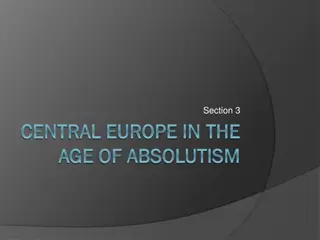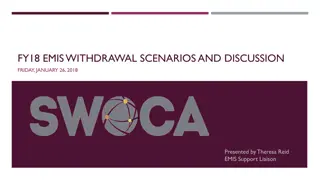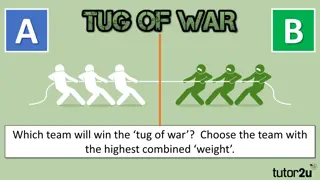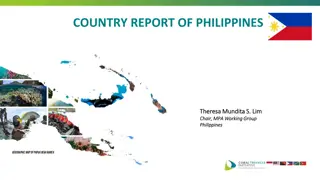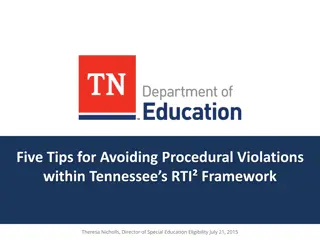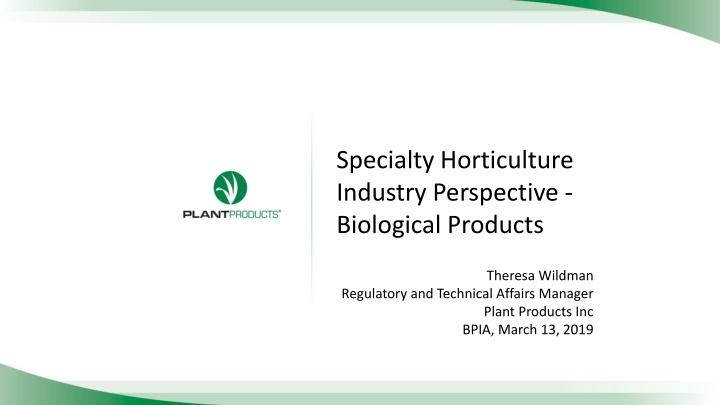
Biopesticides in Horticulture Industry: Benefits and Applications
Explore how biopesticides play a crucial role in modern horticulture practices, offering new modes of action, enhanced crop protection, and sustainable pest management solutions. Learn about their significance in filling gaps for organic production, ensuring worker safety, and complying with export standards.
Download Presentation

Please find below an Image/Link to download the presentation.
The content on the website is provided AS IS for your information and personal use only. It may not be sold, licensed, or shared on other websites without obtaining consent from the author. If you encounter any issues during the download, it is possible that the publisher has removed the file from their server.
You are allowed to download the files provided on this website for personal or commercial use, subject to the condition that they are used lawfully. All files are the property of their respective owners.
The content on the website is provided AS IS for your information and personal use only. It may not be sold, licensed, or shared on other websites without obtaining consent from the author.
E N D
Presentation Transcript
Specialty Horticulture Industry Perspective - Biological Products Theresa Wildman Regulatory and Technical Affairs Manager Plant Products Inc BPIA, March 13, 2019
Canadian Coverage Canadian Coverage
Markets Served Markets Served Commercial Greenhouse Ornamental Greenhouse Vegetables Nursery Specialty Horticulture Turf Golf Courses Athletic Fields Municipalities Lawn Care Operators Landscapers Sod Farms Institutions
USA USA Coverage Coverage
Markets Served Markets Served Commercial Greenhouse Ornamental Greenhouse Vegetables
Commercial Biological products Biopesticides (fungi, bacteria, viruses, extracts etc.) registered via PMRA Biostimulants (living, non-living) registered via CFIA Pheromones (disruption, monitoring) some require registration
Biopesticides Role new active ingredients new modes of action broaden the tools available for crop protection assurance of efficacy (suppression or control) Part of commercial industry for decades
Biopesticides Loss of broad spectrum ai s Cost of registration of new synthetic ai s Product Stewardship Re-evaluations Reduced applications per season Maximum residue limits for export (MRL)
Biopesticides Fill gaps for a more complete pest and disease management program: Seed treatment Very young plants Close to harvest PHI - extreme harvesting Re-entry Intervals REI - worker safety; flow of business; replant intervals
Biopesticides Fill gaps: certified organic production
Biopesticides - Bonuses Compatibility with pre-existing biological control strategies
Pest and Disease management model Pest Population Crop cycle Economic threshold Detection Time
Biopesticides - Challenges Efficacy Storage conditions Use conditions UV stable, surfactants, tank mixing Application intervals - labour cost, ULV Saturation of space Problems that need solving Compatibility with pre-existing biological control strategies
Non-pesticide - Biostimulants, Inoculants Greenhouse, controlled environment (inert media): genetic potential of plant efficacy cost vs benefit
Non-pesticide - Biostimulants, Microbial consortia Soil or media use inoculants plant stress reduction condition of soil specific nutrient release marginal land use
Commercial End use products Quantifiable results Science based standards Technical specifications of products
Specialty Horticulture Industry Perspective - Biological Products Thank you www.plantproducts.com





